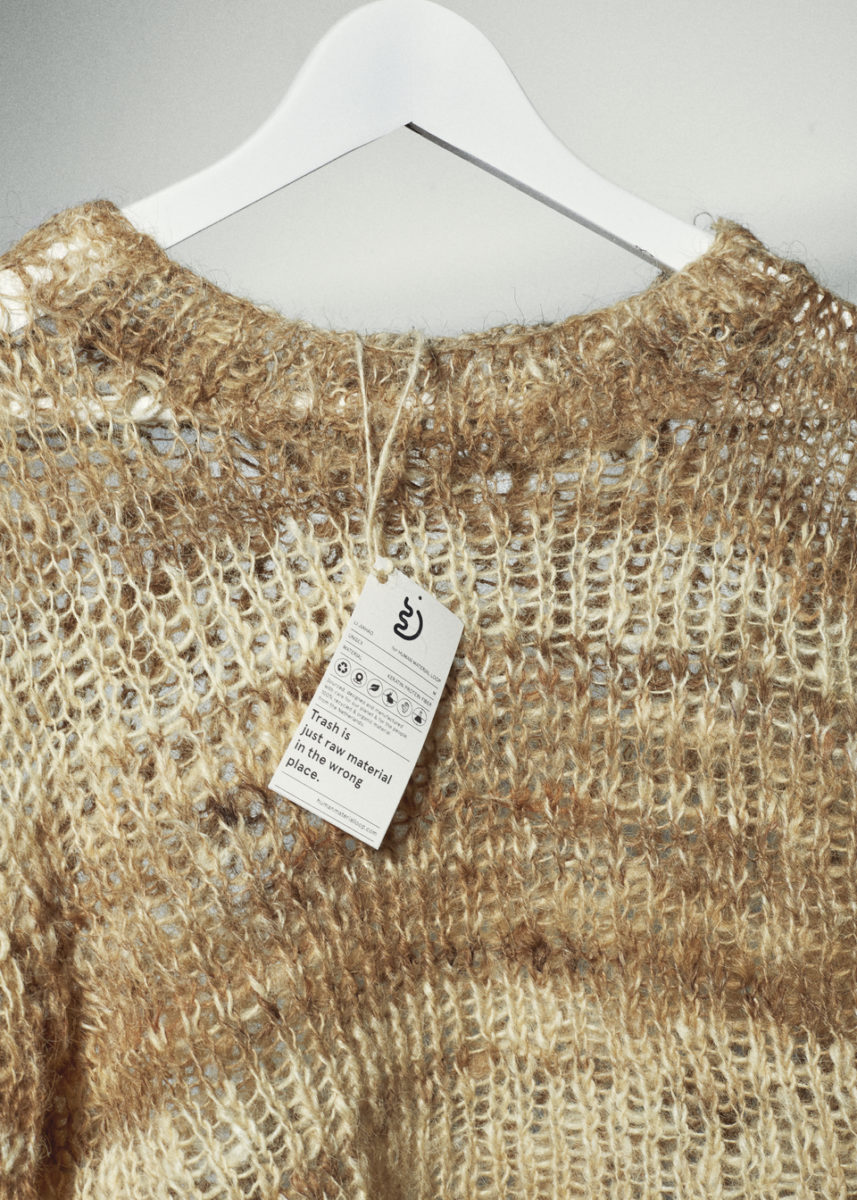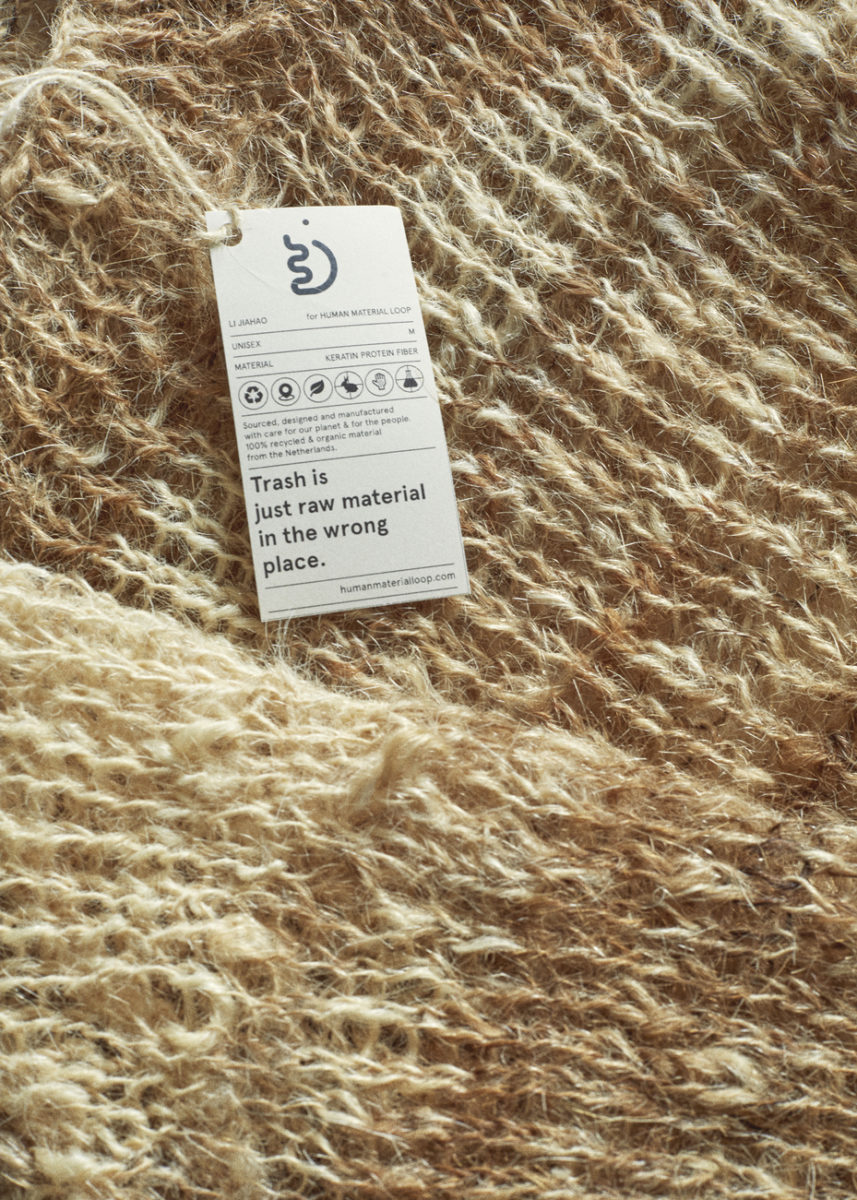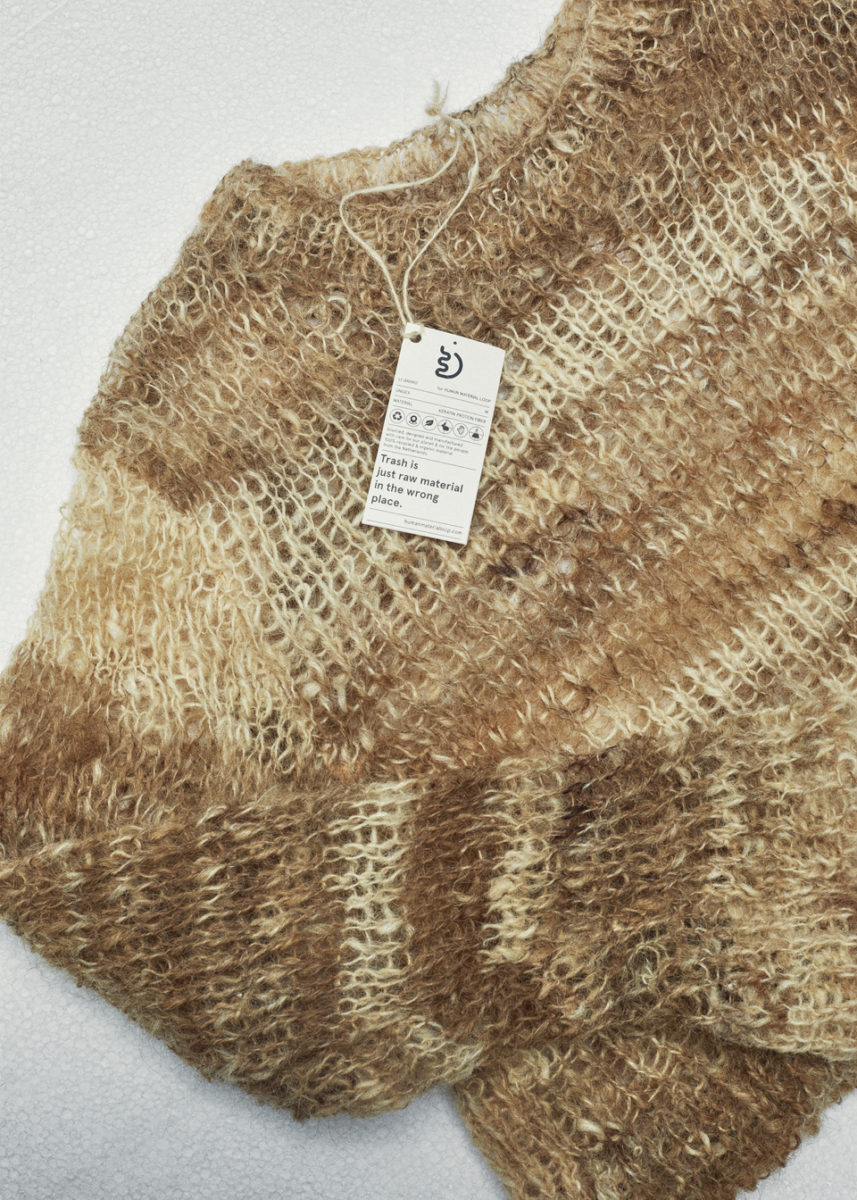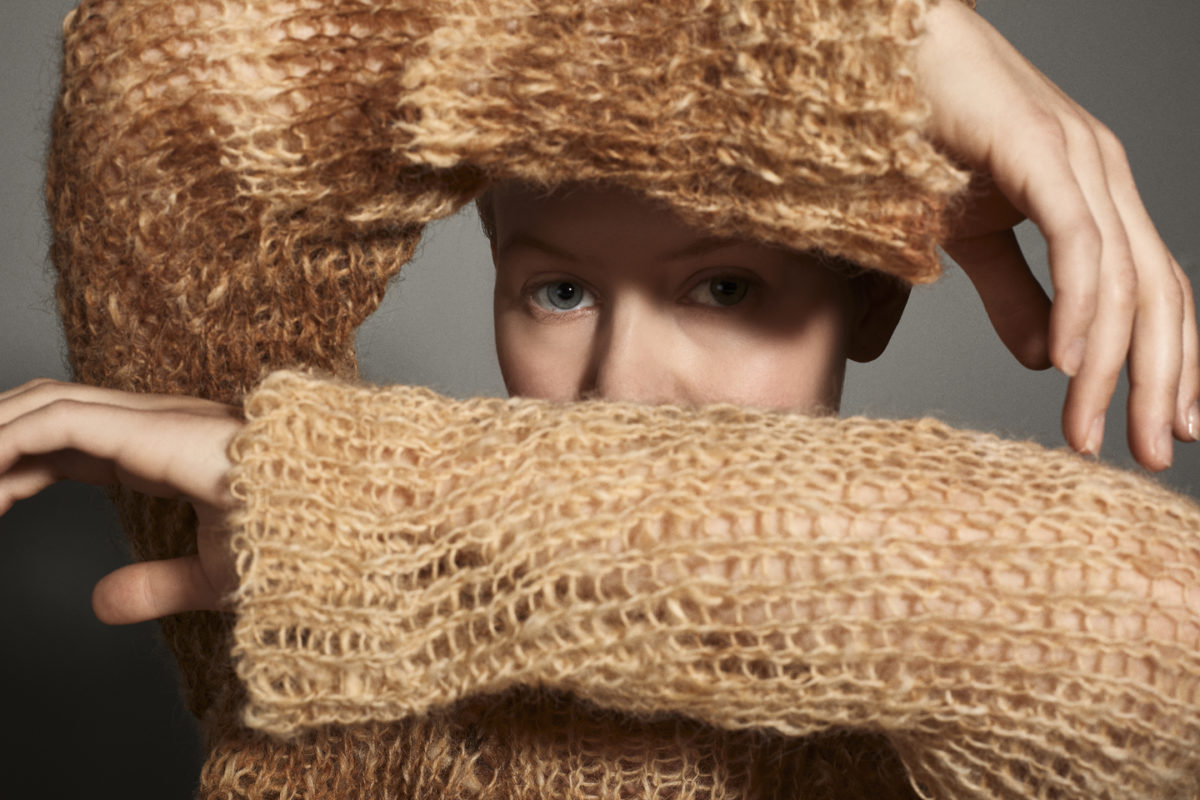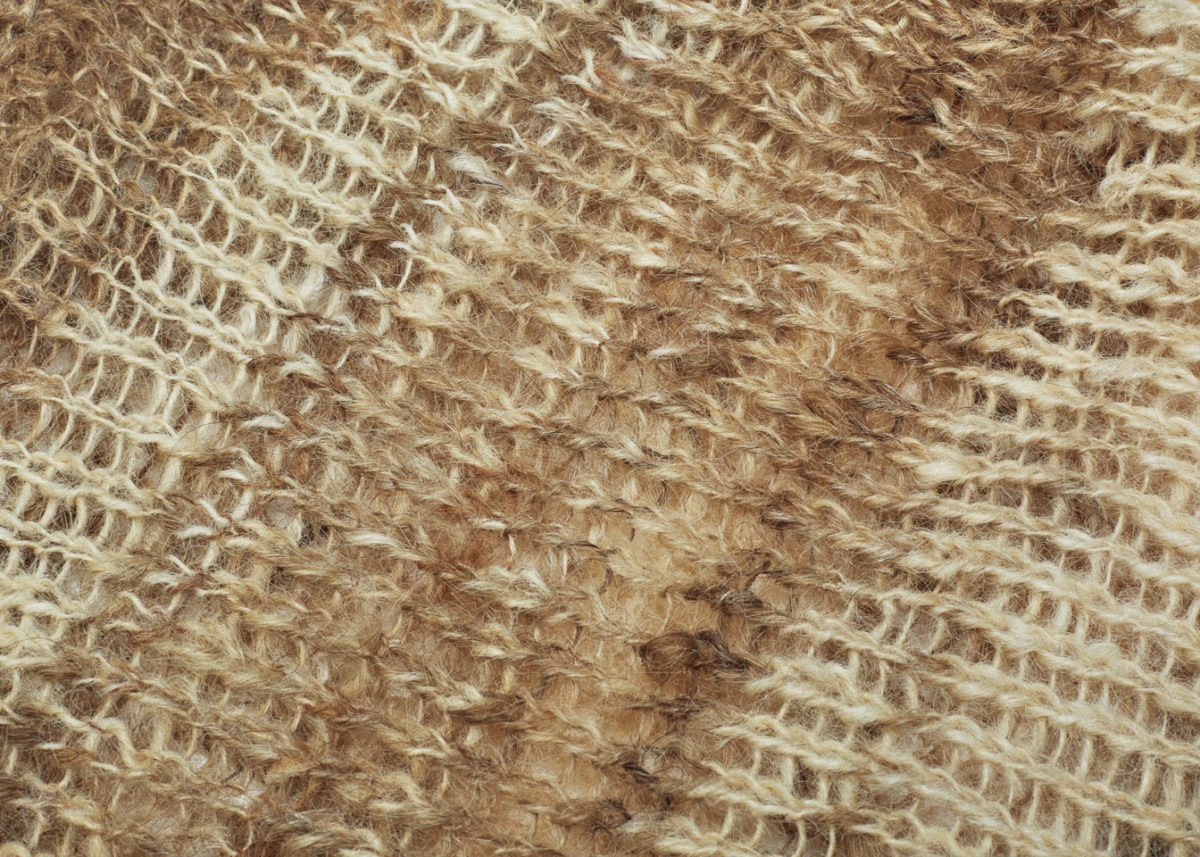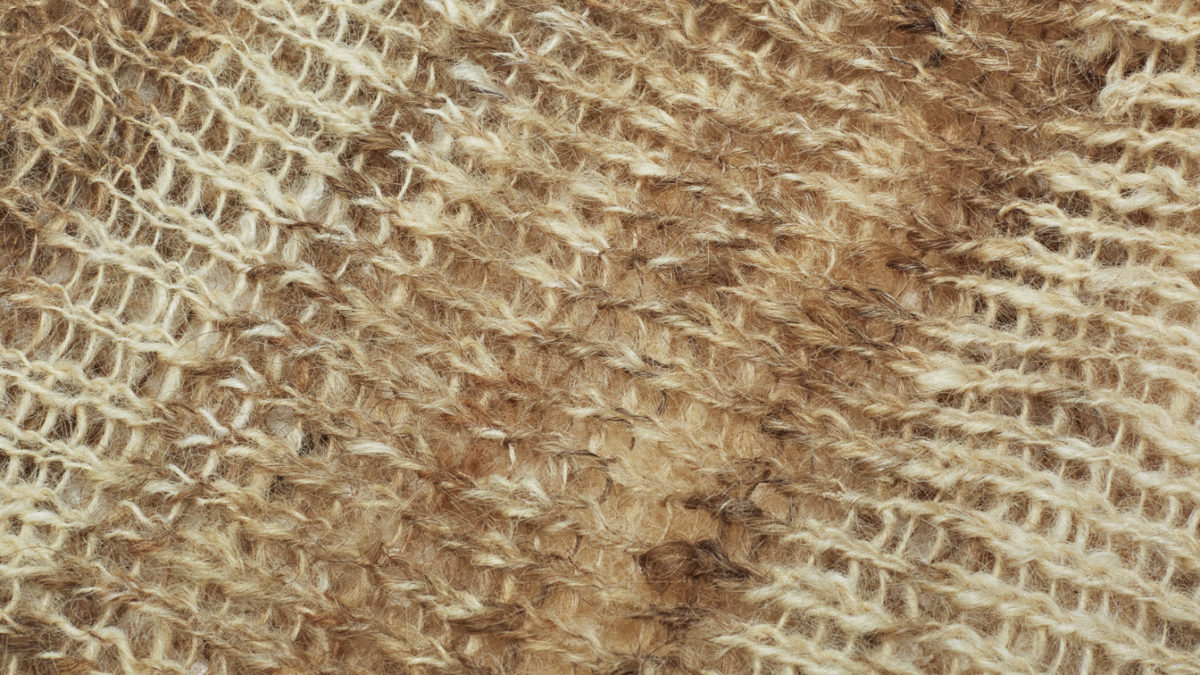
HUMAN MATERIAL LOOP, human hair as a material
Looking at human hair as a material can be puzzling, but overcoming this taboo offers many advantages. An abundance quantity, non-toxic, non-irritating to the skin and anti allergic material to work with. It has a strength to weight ratio comparable to steel. It can be stretched up one and a half times to its original length before breaking. Founded in 2021, Human Material Loop explores the possibilities of waste human hair as a material to create sustainable products and promote a zero-impact economy.
Production is the first aspect to take into consideration: the textile industry is the second largest polluter just after the oil industry. Textile production makes up 10% of humanity’s carbon emissions, and the fashion industry produces 20% of the world’s wastewater. The current sourcing and manufacturing processes in the textile industry cannot be maintained and continued in a sustainable way.
Waste is another big problem: in Europe alone, an estimated 72 million kg of human hair waste is generated. Waste hair accumulates in large amounts in the solid waste streams, choking the drainage systems. It takes several years for human hair before decomposing: a natural filamentous biomaterial with approximately 80% keratin protein. The durability of keratins is a direct consequence of their complex molecular structure.
c
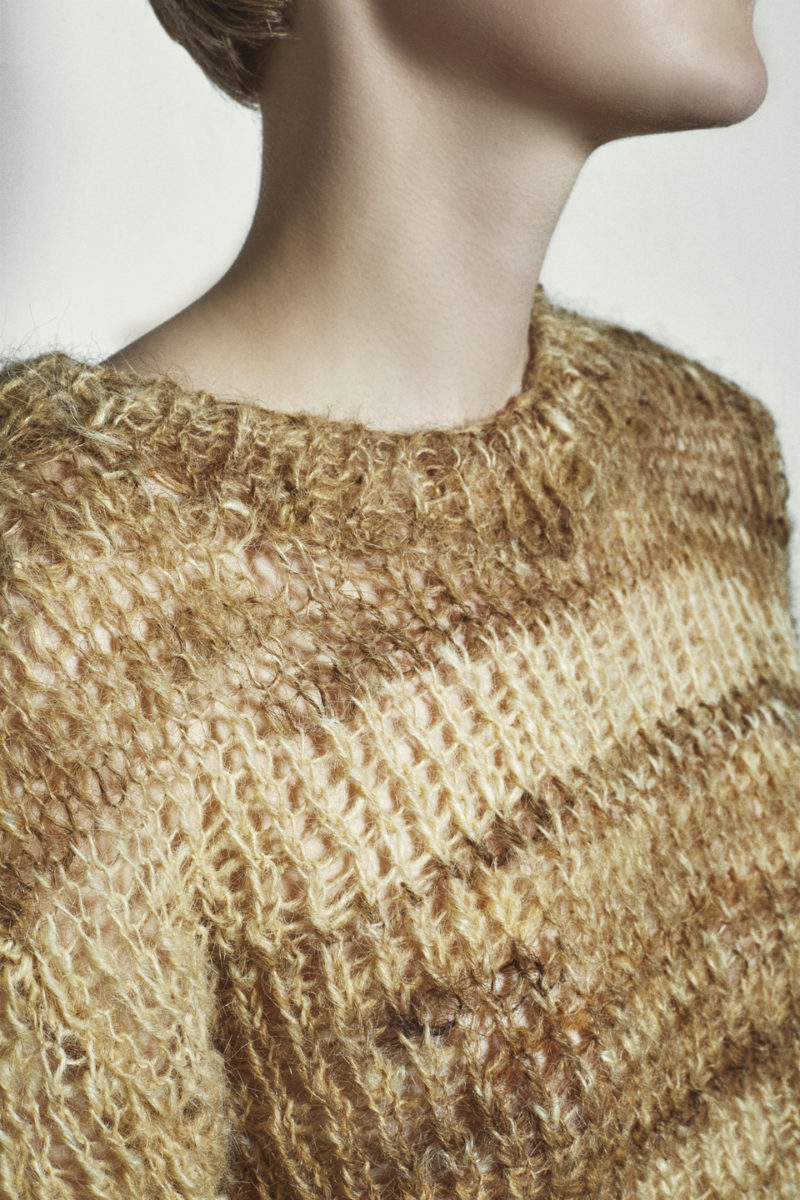
Dutch Blond Sweater 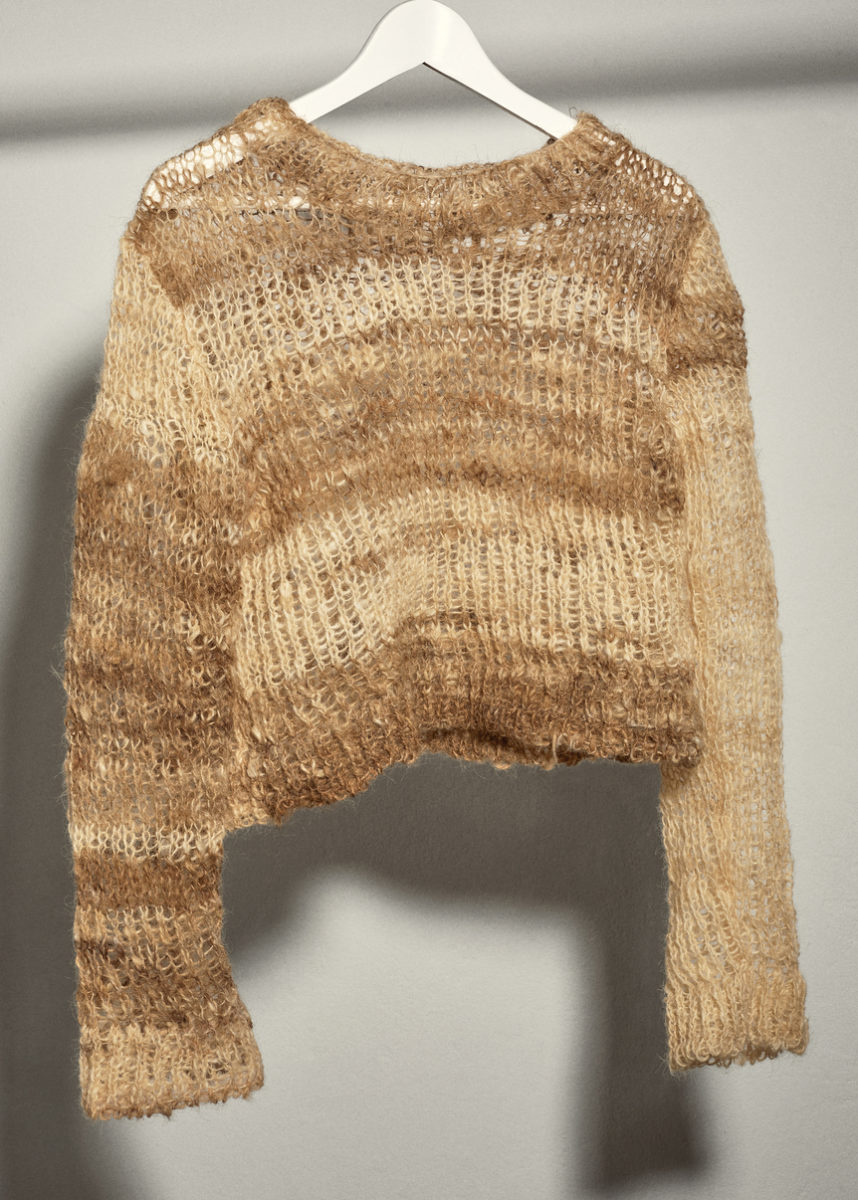
To promote a sustainable economy, it’s necessary to change our idea of waste, no longer garbage but a new commodity. In addition to the characteristics aforementioned, as explained by Human Material Loop, due to the light weight of waste human hair the collected raw material can be transported by carbon neutral bicycles within our cities. Its thermal insulation can be applied within the construction and heavy duty work areas. Its oil absorbing capability can revolutionize how we scent our spaces or how we clean up oil spill disasters. Moreover, shed hair has no nuclear DNA. The hair follicle at its base contains cellular material, therefore hair that has been cut off by a barber or hairdresser does not contain any nuclear DNA and no person can be identified from it.
Specifically, Human Material Loop collects and processes waste human hair from beauty salons. Unlike other materials in the textile industry, human hair does not require any cultivation. At the current stage the material is spun to yarns and woven or knitted to applicable textile pieces. Current developments explore the physical and chemical properties of human hair and an exploration for different industries. On the official website it’s possible to consult a page dedicated to the history of hair and its application, from jewelry to construction ropes.
To find out more visit Human Material Loop! There’s also a FAQ section, where you will find answers to all your questions!
Image: Dutch Blond Sweater, made of 100% recycled Dutch blond hair from Amsterdam, spun and knitted in the Netherlands.
c
c
Do you want to see your project featured on WeVux? Feel free to send us an email at [email protected] to know more, or visit our About page

